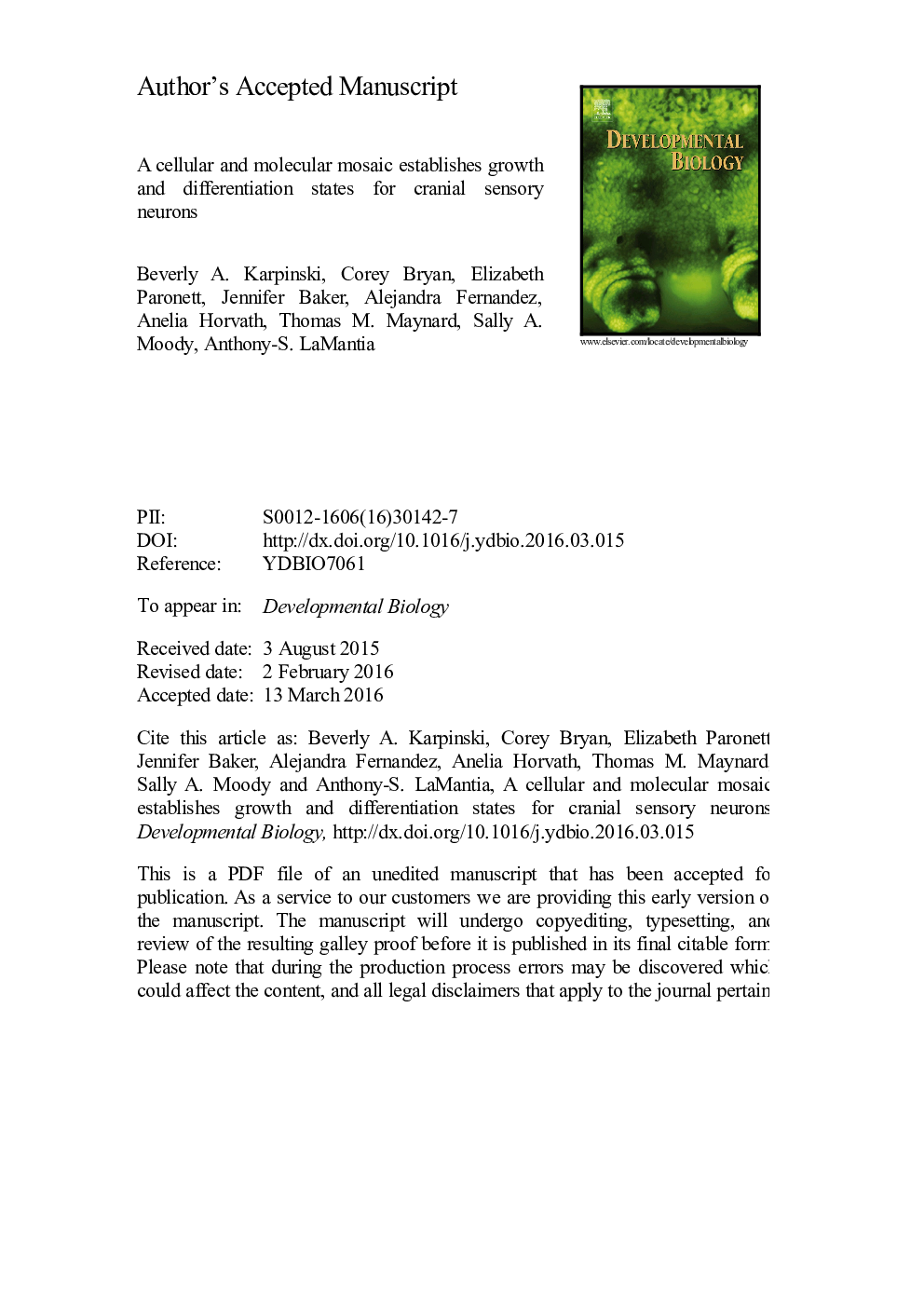| Article ID | Journal | Published Year | Pages | File Type |
|---|---|---|---|---|
| 10931109 | Developmental Biology | 2016 | 48 Pages |
Abstract
We compared apparent origins, cellular diversity and regulation of initial axon growth for differentiating cranial sensory neurons. We assessed the molecular and cellular composition of the developing olfactory and otic placodes, and cranial sensory ganglia to evaluate contributions of ectodermal placode versus neural crest at each site. Special sensory neuron populations-the olfactory and otic placodes, as well as those in vestibulo-acoustic ganglion- are entirely populated with cells expressing cranial placode-associated, rather than neural crest-associated markers. The remaining cranial sensory ganglia are a mosaic of cells that express placode-associated as well as neural crest-associated markers. We found two distinct populations of neural crest in the cranial ganglia: the first, as expected, is labeled by Wnt1:Cre mediated recombination. The second is not labeled by Wnt1:Cre recombination, and expresses both Sox10 and FoxD3. These populations-Wnt1:Cre recombined, and Sox10/Foxd3-expressing- are proliferatively distinct from one another. Together, the two neural crest-associated populations are substantially more proliferative than their placode-associated counterparts. Nevertheless, the apparently placode- and neural crest-associated populations are similarly sensitive to altered signaling that compromises cranial morphogenesis and differentiation. Acute disruption of either Fibroblast growth factor (Fgf) or Retinoic acid (RA) signaling alters axon growth and cell death, but does not preferentially target any of the three distinct populations. Apparently, mosaic derivation and diversity of precursors and early differentiating neurons, modulated uniformly by local signals, supports early cranial sensory neuron differentiation and growth.
Related Topics
Life Sciences
Biochemistry, Genetics and Molecular Biology
Cell Biology
Authors
Beverly A. Karpinski, Corey A. Bryan, Elizabeth M. Paronett, Jennifer L. Baker, Alejandra Fernandez, Anelia Horvath, Thomas M. Maynard, Sally A. Moody, Anthony-S. LaMantia,
